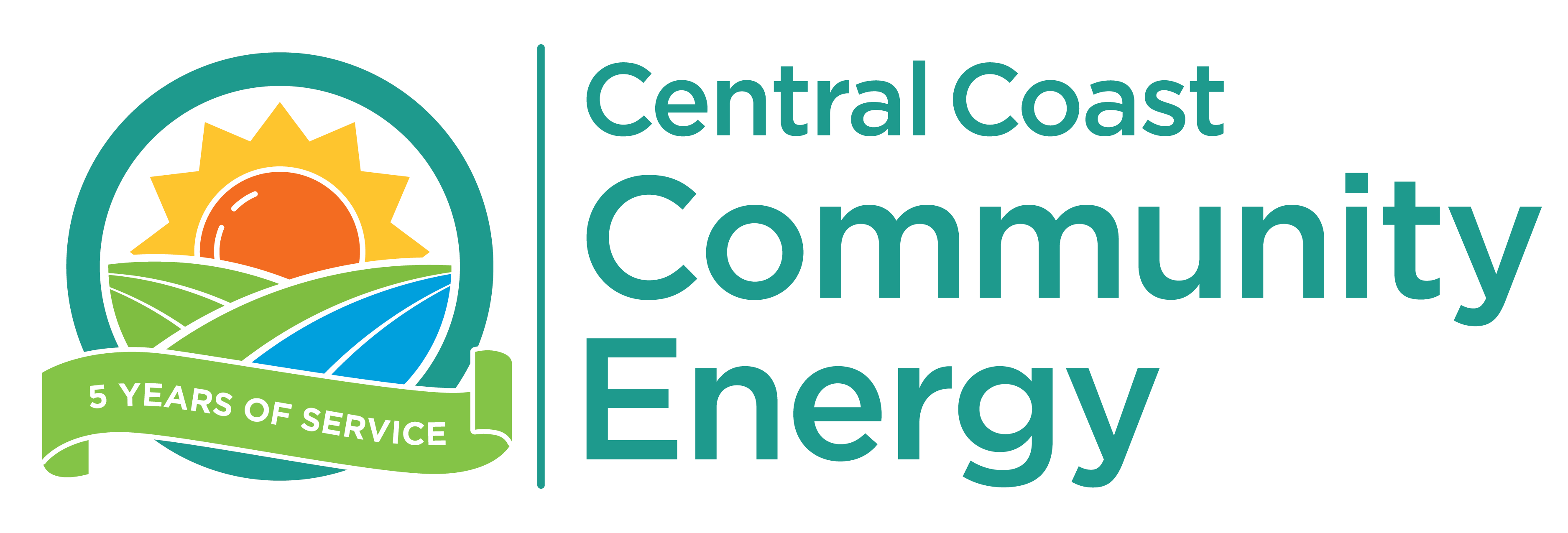Charge Your Fleet
Overview
The Charge Your Fleet Program provides Central Coast Community Energy Member Agencies with direct rebates for the purchase and construction/installation of electric vehicle service equipment including the time, materials, and work required to install those chargers at Member Agency sites.
Member Agencies are the cities and counties that have joined the Central Coast Community Energy Joint Powers Authority and have been approved by the Policy Board of Directors.
Rebates will be awarded on a first-come, first-served basis.
Why Electrify?
- Reduce greenhouse gas emissions
- Improve air quality
- Increase available EVSE in 3CE service area
- Accelerate EV adoption for municipal fleets by incentivizing purchase and installation of EVSE
“Central Coast Community Energy’s Member Agency Services team provided Santa Barbara County with $242,000 for electric vehicles and electric vehicle charging infrastructure helping us to accelerate our electrification efforts. These dollars are well spent and significantly help us to reduce both GHG and other vehicle exhaust emissions while at the same time increasing our overall operating efficiency and driver comfort. Truly, this has been a win-win engagement.”
-Skip Grey, Assistant Director of the General Services Department of the County of Santa Barbara
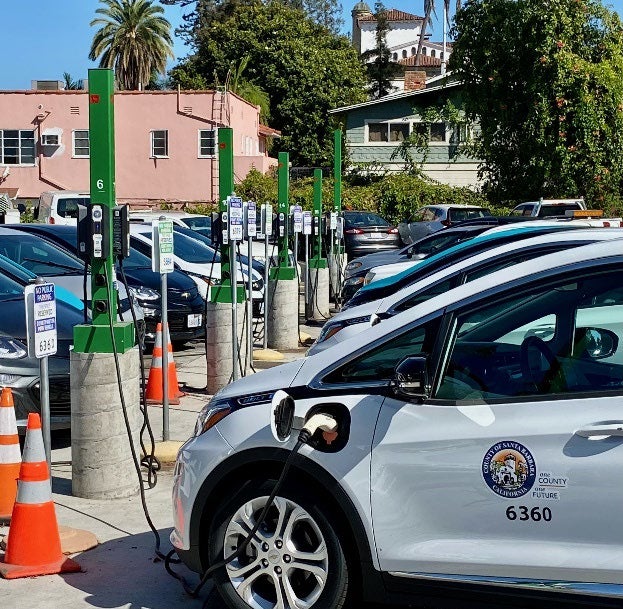
Who is Eligible?
Member agencies that are in good standing. Only one applicant may represent any Member Agency. The applicant is the authorized person submitting the application. Single or multiple departments may apply together under one application with only one applicant submitting the application(s).
Project Eligibility
A project is identified by:
- The street address on the customer electricity bill where the EVSE is installed
- The EVSE make and model (including power rating)
Charger Specifications
- May be permanently installed or plugged into a 240 VAC
- As applicable, the primary device and/or charging device (when utilized) shall be “network capable.” This means that for the purpose of participating in “demand response” type programs, the device and/or it’s charger shall be enabled with communications capability such that either or both may be controlled (throttled down, turned off/on, etc.) through a local network signal, wi-fi, radio frequency (RF) or cellular communications
- Must be new equipment (not refurbished).
- Must be certified by Underwriters Laboratory Inc. (“UL Listed”)
- EVSE work must completed in compliance with local codes, ordinances and standards and, when required, permitted, inspected and signed off by the Authority Having Jurisdiction (AHJ)
- Customers entering into special agreements such as long term “lease”, “rental”, and other “non-purchase” type agreements with third parties will provide complete copies of contracts/agreements indicating all 3CE customer costs associated with the special agreement. Rebates are intended to reimburse customer costs.
- Program rebates are applicable to “customer-side” work and not applicable to utility-side make-ready upgrades such as transformers, service upgrades, reconductoring for service upgrades, etc. See below.
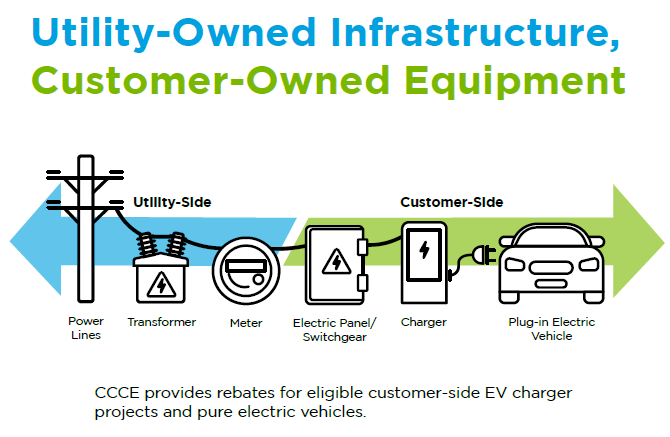
Rebates
Rebates are available post-purchase and will be awarded on a first-come, first-served basis. A Member Agency is eligible for up to $150,000.
| CCCE Measure | Per Measure Incentive |
|---|---|
| Level 2 Charger Port | Up to $5,000 |
| Level 3 Charger Installation | Up to $100,000 |
- Level 2 charger and EVSE: up to $5,000 per port, not to exceed 75% of the project cost, whichever is less.
- Level 3 charger rebate: up to $100,000 per installation, not to exceed 75% of the project cost, whichever is less.
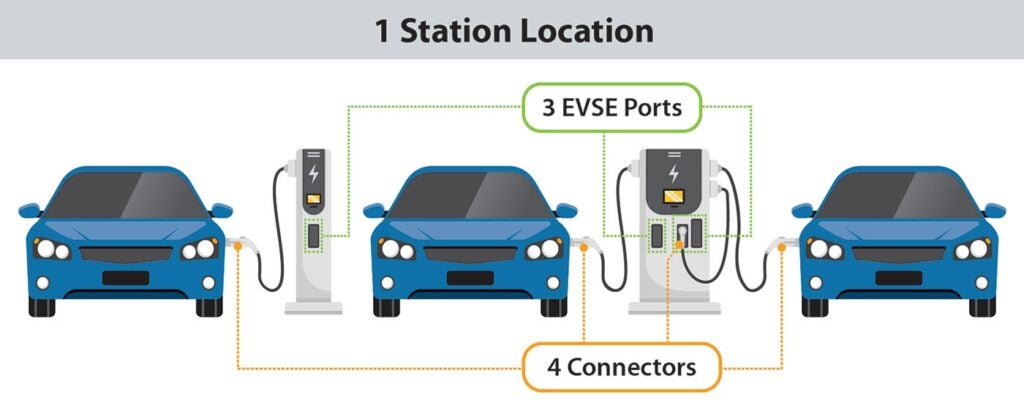
Steps
- Submit online application with supporting documentation (see below)
- 3CE performs verification check for eligibility and completeness
- 3CE staff meets with applicant to walk through application and discuss deficiencies (optional)
- Customer receives “Application Complete” email with details of rebate
- Project is sent to the 3CE Finance Department to issue payment
- Customer receives payment check
Document Checklist
Please collect the following information and documentation before applying.
| Submittal Checklist Items |
|---|
| Photo/Photos of the completed EVSE projects supported by this program. and A paid and itemized invoice from the vendor/contractor to validate purchase. The invoice should clearly show location of installation and expenses for 1. charger(s) make and model and number of ports, 2. labor and materials, etc. as required to document the project cost. or A similar document describing the installation and indicating the applicant has paid for eligible services and/or equipment. |
Resources
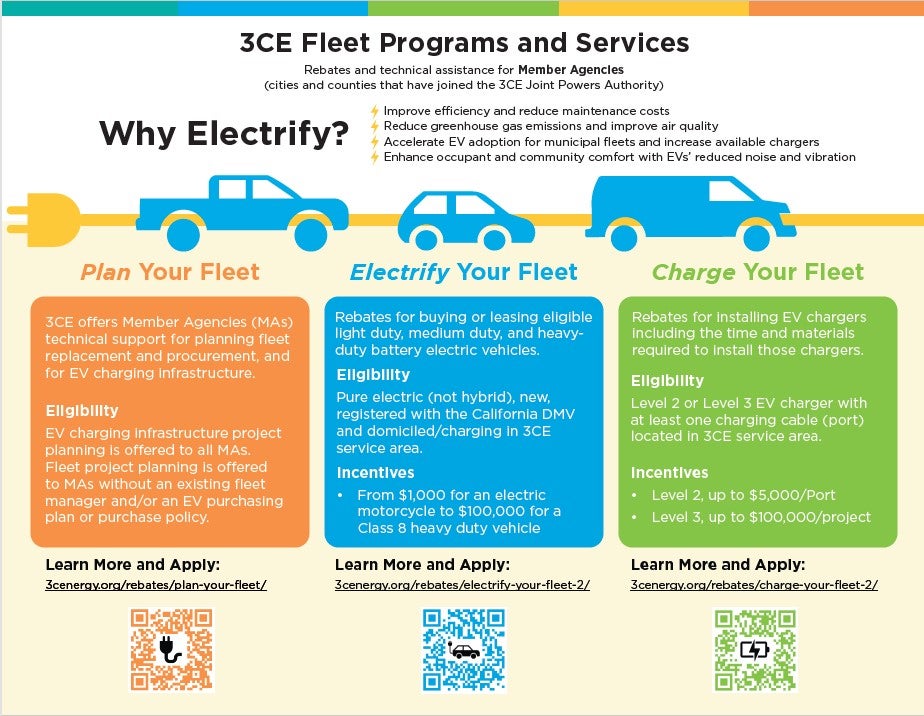
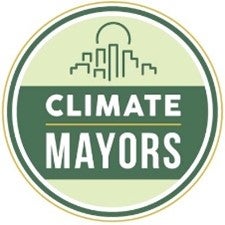
The Climate Mayors EV Purchasing Collaborative was launched in Fall 2018 with the help of the Electrification Coalition to leverage the buying power of fleets to make electrification simple, affordable, and accessible. The Collaborative works with over 210 fleets around the nation to highlight those who are transitioning their fleets to electric.
The goal of the Collaborative is to support fleet electrification efforts by providing free and customized technical support and procurement help, as well as helping fleets identify funding for vehicles and charging stations.

The Electrification Coalition develops and implements a broad set of strategies to facilitate widespread adoption of electric vehicles. These strategies include policy development, advocacy campaigns, consumer education, fleet electrification, cultivation of bipartisan support, community electrification planning, EV supply chain development, and coalition building.
The Local Government Playbook contains recommendations for how counties, cities, and towns can leverage federal investments in electric vehicle infrastructure. It provides a “checklist” of actions and strategies that local governments can enact now and in the future, including best practices, innovative policy approaches, and lessons from previous charging deployments.
Funding Navigation for California Communities
Funding Navigation for California Communities offers the most prominent funding opportunities for local governments and communities.
